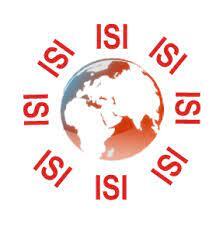Diagnostic and typology of economic functioning of farming systems in the southern province of Rwanda .Case study of Nyamagabe and Nyaruguru Districts
DOI:
https://doi.org/10.62103/unilak.eajst.5.5.79Keywords:
Soil fertility, Rural poverty, Declining farms, NyamagabeAbstract
Considered as the main engine for economic growth and poverty reduction, the Rwandan
agriculture sector has entered into a period of great transformation and modernization of its
farming systems to open itself to the market. To get there however, many problems and various
agricultural challenges of a different nature and level in every region need first to be identified
and analyzed for passing to the action. This study is designed to advance further current reforms
by defining and analyzing the socio‐economic problems and challenges of farming systems based
on a study case of Nyamagabe and Nyarugura District in the Southern Province. To get a grip on
the subject, a rapid desk review has been conducted on the region and Rwandan agricultural
situation in general followed by a survey done on 210 farming households randomly chosen. The
data analysis and results have led to the division of farms into three categories following
principles:
In the first group, there are very poor farmers living below the survival threshold. Evaluated at
39%, these farms have very small land, labor is limited, livestock is absent or reduced to a single
animal. The majority of these farms provide remarkably below the reproduction threshold income
(375,000Rwf.) and many of them cannot even exceed the survival threshold (250,000Rwf).
In the second group, there are agriculture‐livestock dominated farms (47%) where these
activities provide the largest share of monetary income. They live much on their agricultural
productions and the livestock is often the primary source of liquidity; investment capacities are
still very limited. They are in more or less stable equilibrium regarding expenses and products.
In case of serious problem (illness, death, loss of animals, etc.), they decline with a rapid
impoverishment: animals’ sales greater than the herd increase rate, rental of the labor force and
land sales to finally find themselves in the situation of poor farms.
The third and last group includes farms supported by a salary employee or by a generating income
off‐farm activity (14%). They have a very good cash flow and invest in a noticeable way in
agriculture (purchase of inputs, payment of labor) and livestock (purchase of animals). Their
tendency is to the capitalization: purchase of land and animals, improve their production capital
through the use of employees, etc...
The general outcome of this study is that demographical, economic, social or cultural changes
that affected the studied area for decades did not equally inspire a dynamic organizational
transformation to allow the development and reinforcement of capacity of farmers and
organizations facing the new challenges of rural development.








